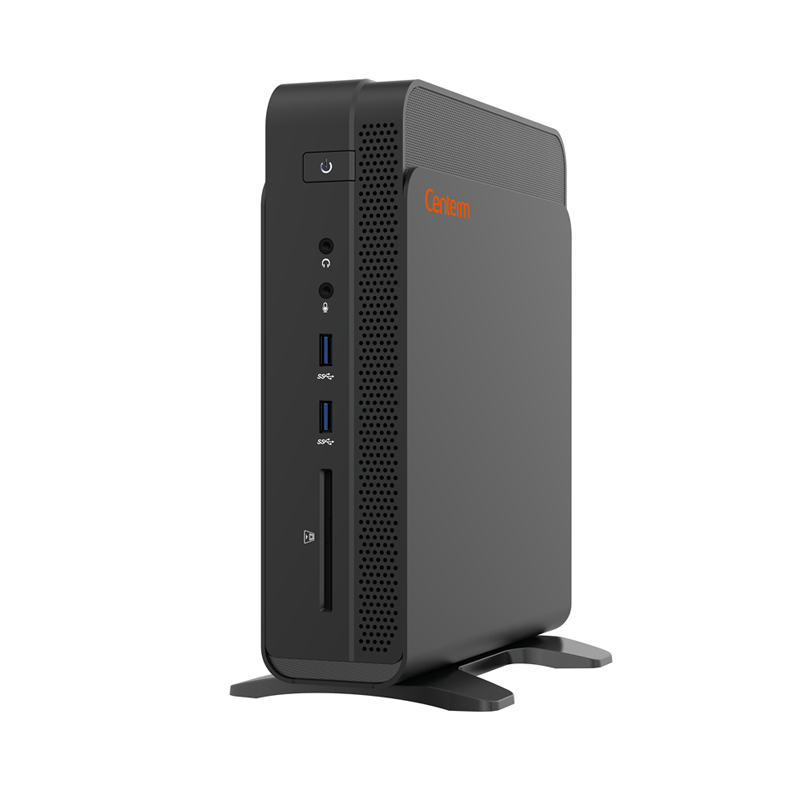I've noticed a trend. It's not anything emerging or future-shaping like ChatGPT or generative AI, but it does elicit a similar reaction from certain people.
More often than not, when I use the phrase thin client to vendors today, they sort of grimace as if they're not sure how to look at that phrase anymore. On one hand, it's a universal name for a type of device that everyone understands; but, on the other, it doesn't describe the device as aptly as it once did. Maybe it's time to switch things up. Rdp Zero Client

Originally, thin clients were akin to the dumb terminals of a bygone mainframe era. They were devices that did nothing other than connect to a virtual desktop or application. Some even touted having terminal emulators built in so they could still communicate with mainframes. They were referred to as thin because they didn't have much -- if any -- operating system, required little maintenance or support and had few moving parts. The terminology led to the first umbrella term for what we call desktop virtualization today: thin client computing.
In the 25-plus years since the first thin clients were introduced, new use cases have appeared along with novel approaches to hardware and software. After all, 25 years is more than a few lifetimes in terms of IT trends. Though traditional thin clients that more or less align with the classic use case still exist, there are other more capable solutions that are -- perhaps unfairly -- placed in the same bucket due to the lack of terminology to describe them.
There are several vendors that make hardware-based thin clients. You're likely familiar with the main players such as Dell Wyse, HP and 10ZiG, while others including ClearCube, Pano Logic and NComputing also remain active. New vendors, such as ZeeTim, arrive from time to time as well.
IGEL would have made the list, but it recently got out of the business of making its own hardware, instead focusing on its IGEL Cosmos operating system that can turn just about any x86 hardware into a thin client. This puts it in the same category as Stratodesk, another well-known vendor that specializes in an OS -- NoTouch -- to convert x86 hardware into thin clients as opposed to making hardware itself.
Here's the problem: Regardless of whether the product is hardware- or software-based, each of these vendors offers solutions are far less "thin" than thin clients were originally. For example, the operating systems from IGEL and Stratodesk, while more lightweight than Windows or macOS, have a huge array of capabilities. They have full browsers, they directly support attached peripherals, they can run local applications, they've integrated their management and security features and much more. That's hardly "thin." And while the devices that run these OSes might still be used access virtual desktops and applications, use cases are developing where that's just one of many purposes.
Adding to the tangle that we're currently in, some vendors do both an OS and hardware. Dell, HP, 10ZiG, NComputing and ZeeTim all offer PC repurposing tools that will convert existing x86 hardware into clients manageable with the same platform used to manage their thin client devices. In that situation, is it appropriate to call what was once a full-fledged PC a thin client?
Finally, this muddying of the waters around the idea of a what a thin client is could extend to things that we never would've considered thin clients before. For example, Google ChromeOS Flex is intended to repurpose x86 hardware with ChromeOS, just like IGEL Cosmos, Stratodesk NoTouch and others. If that device is used to access a virtual app or desktop, couldn't someone make the case to call ChromeOS a thin client OS, too? The OS might not have come from a traditional thin client vendor, but it has the same basic features and management, so someone could easily make that argument.
Back to the grimacing around the name thin client. While the term is certainly well known, it doesn't do a good job of describing exactly what's going on anymore. Vendors have tried to combat this with their own naming. Dell has Cloud Client Workspace, IGEL calls its product an Endpoint OS and Stratodesk frames its offering as an edge platform.
Perhaps we need a new term -- or an additional one -- to describe some alternative OS on a traditional endpoint. It should convey advanced capabilities that fall somewhere between traditional thin clients and full-blown OSes such as Windows or macOS, while also not polluting the internet with meaningless marketing terms like cloud bridges or hybrid hubs. Just for fun, I asked ChatGPT to come up with a funny marketing name, and it suggested "CloudHybridator DesktopMax," which is really great!
I prefer to keep things simple, so I'm proposing adding a new term to replace thin clients: rich clients.
This works for a few reasons. First, it retains the term thin client and returns its original meaning, which worked well to describe the use case. Second, by using the term rich client, we're still keeping the mindset that we're not talking about a Windows PC or a smartphone or whatever -- something that the broadly used endpoint might do -- while still conveying that there's more going on here. Finally, it doesn't limit us to traditional thin client use cases or OSes. IGEL and Stratodesk, those are rich client OSes. Since they work with thin client hardware, you could say they turn thin clients into rich clients. Even ChromeOS Flex can be used to create rich clients.
The only problem is that rich client is already a term, ironically used to describe the opposite of a thin client. The term thin client was coined at the same time as thick client, and if you check Wikipedia today for "thick client" it redirects you to "rich client." You can't make this stuff up.
I still think it works, and terms have been repurposed before. And besides, have you ever heard anyone use the phrase rich client? It's way better than "CloudHybridator DesktopMax" anyways.
What do you think? Is this even necessary? I've never been great at naming trends or technology, but I think this one might work. I have a couple research projects underway that will include questions aimed at understanding how people use thin or so-called rich clients today, so hopefully that will shed some light on the matter, too. As usual, I encourage feedback via LinkedIn.
Gabe Knuth is the senior end user computing analyst for TechTarget's Enterprise Strategy Group. He writes publicly for TechTarget in addition to his analyst work. If you'd like to reach out, see his profile on LinkedIn or send an email to [email protected] .
Many use cases for generative AI involve projecting to the future and aren't currently easy to use. However, these four use cases...
Certain endpoint use cases require ruggedization to ensure devices aren't physically compromised. IT still needs to manage these ...
In use cases that require ruggedized devices, organizations can choose to go with fully ruggedized devices or standard devices ...
A new partnership between two enterprise technology giants adds Oracle's hardware and software for Microsoft Azure customers, as ...
Enterprise Strategy Group's Scott Sinclair shares survey results on the benefits and challenges of managing distributed clouds. ...
IT teams can better streamline workflows, enhance security and improve the developer experience by understanding these Azure ...
This year’s VMware Explore conference ran from Aug. 21 to 24. Read the latest news and announcements about and from the event, ...
TechTarget hosts its Best of VMware Explore Awards to recognize outstanding products that help organizations create ...
Submit your entry for the Best of VMware Explore 2023 Awards for a chance to win.

Benefits Of Cloud Computing All Rights Reserved, Copyright 2008 - 2023, TechTarget Privacy Policy Cookie Preferences Cookie Preferences Do Not Sell or Share My Personal Information